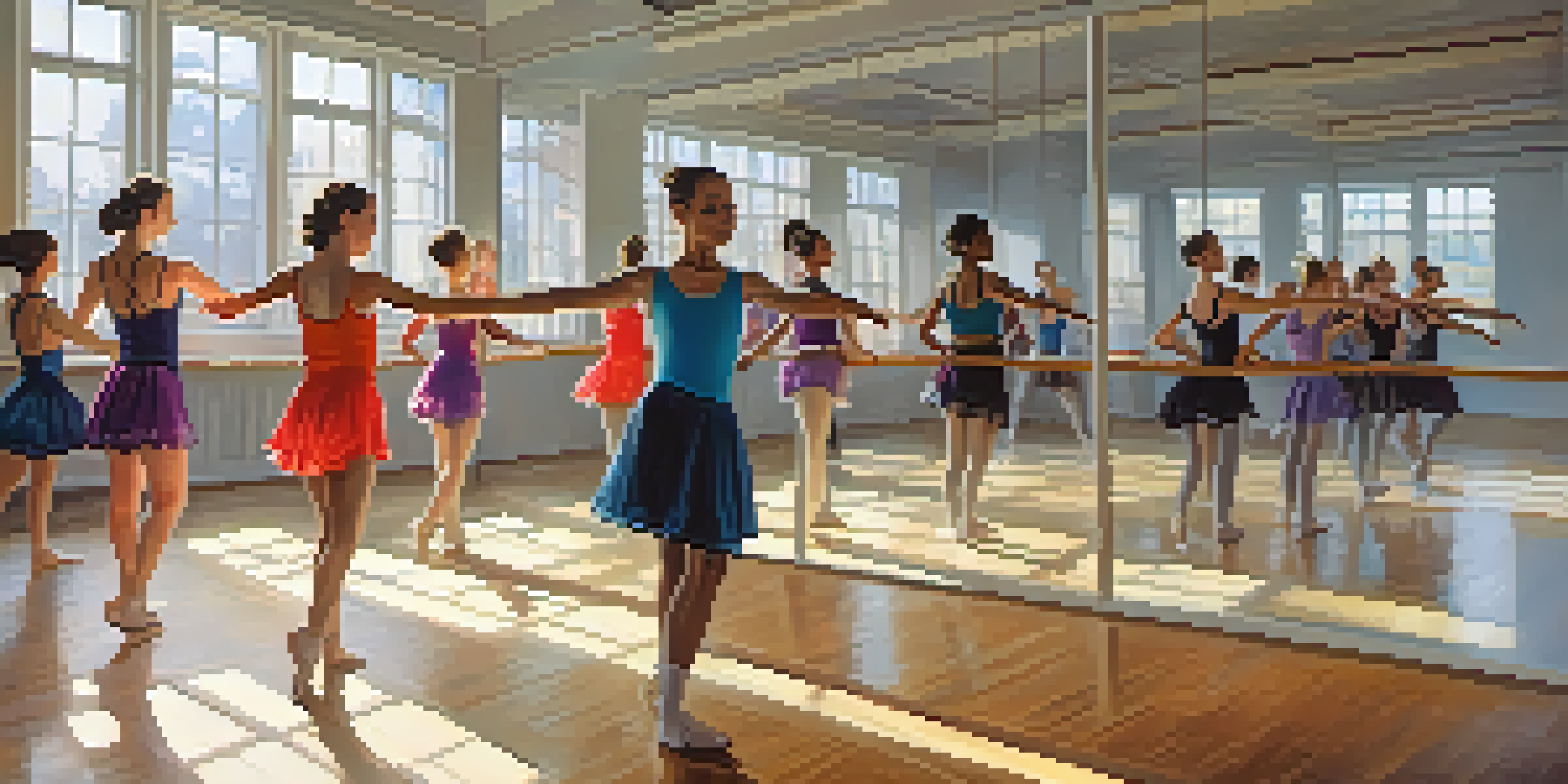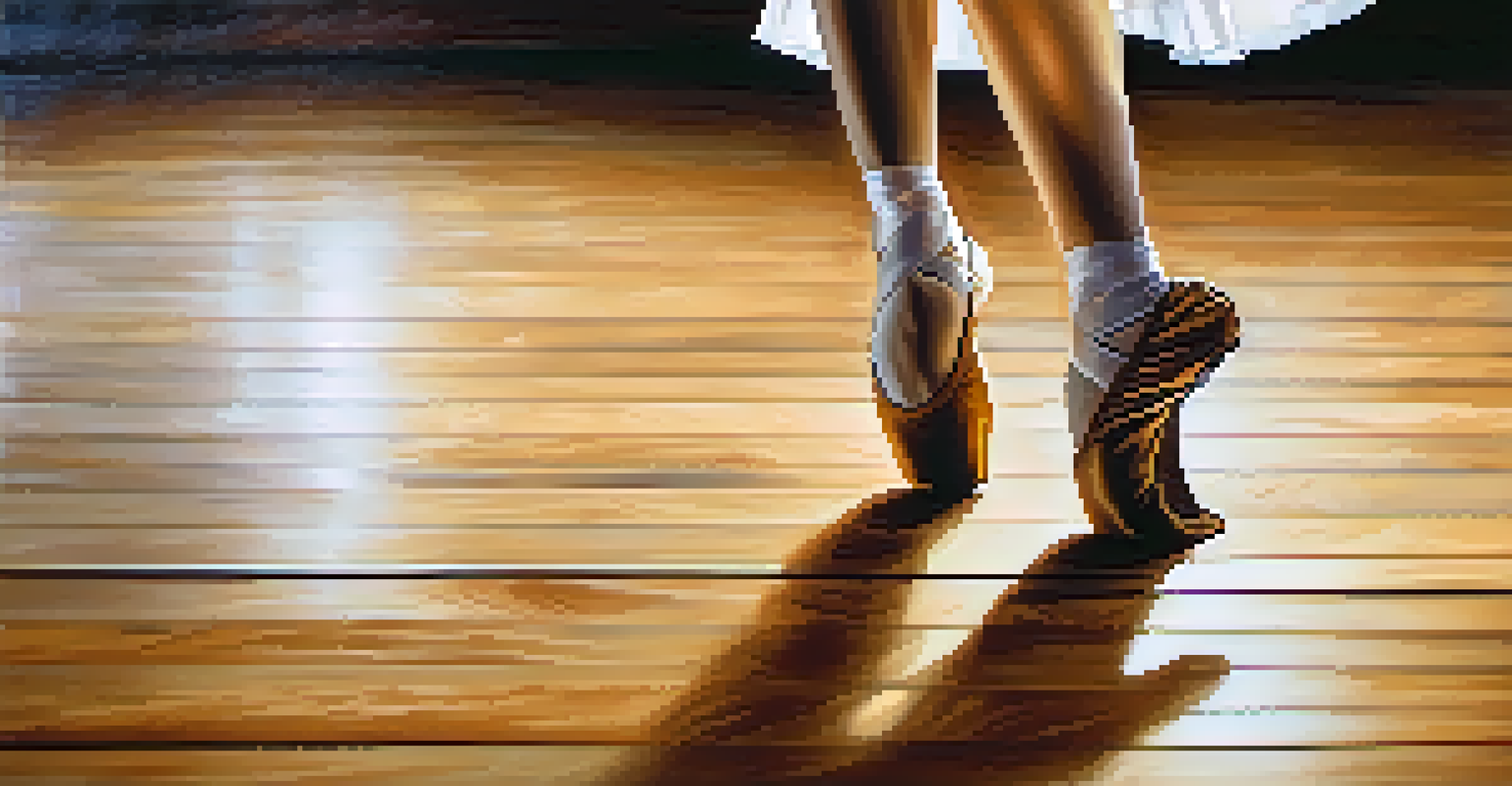The Role of Dance in Cognitive Development and Memory

Introduction to Dance and Cognitive Development
Dance is more than just an art form; it plays a significant role in cognitive development. When we dance, we engage not only our bodies but also our minds, stimulating various cognitive processes. This engagement can lead to improvements in areas such as memory, attention, and problem-solving skills.
Dance is the hidden language of the soul.
For example, learning choreography requires memorization and spatial awareness, both of which are essential cognitive skills. Additionally, the rhythmic patterns in dance can enhance our ability to process information. Through movement and music, dance fosters a unique environment for cognitive growth.
In essence, dance can be viewed as a workout for the brain, encouraging mental flexibility and creativity. This connection between movement and cognitive function reminds us that learning is not confined to traditional methods, but can be enriched through physical expression.
The Neuroscience Behind Dance and Memory
Recent studies in neuroscience reveal fascinating insights into how dance influences memory. Engaging in dance activates various brain regions, including those responsible for coordination and memory retention. This multi-sensory experience creates stronger neural connections, which can enhance our ability to recall information.

For instance, dancers often demonstrate improved verbal memory and recall abilities compared to non-dancers. The combination of physical movement and music creates an immersive experience that boosts cognitive function, making it easier to learn and remember new information.
Dance Boosts Cognitive Skills
Engaging in dance enhances memory, attention, and problem-solving abilities through physical movement and music.
These findings suggest that incorporating dance into educational settings could provide significant benefits. By integrating movement, educators can create more engaging learning environments that promote better memory retention among students.
Dance as a Tool for Enhancing Attention Skills
Attention is a crucial component of cognitive development, and dance can play a vital role in honing this skill. When dancers focus on their movements and the rhythm, they practice selective attention, filtering out distractions in their environment. This practice can translate to improved attention spans in other areas of life.
To watch us dance is to hear our hearts speak.
Consider a dance class where students must concentrate on precise movements while also listening to the music. This dual focus trains their brains to manage multiple tasks simultaneously, a skill that is invaluable in academic and professional settings. Over time, this enhanced attention can lead to better performance in various cognitive tasks.
Moreover, the physical aspect of dance encourages a deeper connection to the music and movements, making attention training more enjoyable. This enjoyment can foster a lifelong appreciation for learning and cognitive engagement.
The Connection Between Dance and Emotional Well-Being
Emotional well-being is closely tied to cognitive development, and dance serves as a powerful outlet for emotional expression. Engaging in dance allows individuals to express their feelings non-verbally, which can lead to better emotional regulation. This emotional stability is crucial for effective learning and memory retention.
For instance, when people dance, they often experience a release of endorphins, which can elevate mood and reduce stress. This reduction in stress can create a more conducive learning environment, allowing for improved cognitive performance. Thus, dance not only enhances physical health but also contributes to mental wellness.
Emotional Well-Being Through Dance
Dance serves as a powerful outlet for emotional expression, promoting better emotional regulation and cognitive performance.
Furthermore, participating in group dances fosters social connections, which are essential for emotional support. These interactions can lead to increased motivation and a greater sense of belonging, further enhancing cognitive development through positive emotional experiences.
How Dance Stimulates Creative Thinking
Creativity is a vital aspect of cognitive development, and dance can be a significant catalyst for creative thinking. Movement encourages individuals to think outside the box, experiment with new ideas, and express themselves in unique ways. This freedom of expression can lead to innovative problem-solving skills.
For example, improvisational dance allows dancers to explore spontaneous movement, fostering a mindset open to exploration and risk-taking. Such experiences can enhance cognitive flexibility, enabling individuals to adapt their thinking and approach challenges more effectively.
Moreover, the artistic nature of dance encourages individuals to view situations from different perspectives. This shift in viewpoint can cultivate a more creative approach to various life challenges, suggesting that dance can be a valuable tool not only for personal expression but also for enhancing cognitive abilities.
Dance and Intergenerational Learning
Dance also serves as a bridge between generations, fostering intergenerational learning. When younger and older individuals come together to dance, they share knowledge and experiences that enrich cognitive development on both sides. This exchange can improve memory retention and cognitive skills across age groups.
For instance, traditional dance forms often involve storytelling, allowing older generations to pass down cultural narratives while engaging younger participants. This not only preserves cultural heritage but also enhances cognitive skills such as listening and comprehension in both age groups.
Creativity Flourishes with Dance
Dance encourages creative thinking and cognitive flexibility by allowing individuals to explore movement and express ideas freely.
Furthermore, these intergenerational interactions can promote social cohesion and emotional well-being. By connecting through dance, individuals can foster mutual respect and understanding, enriching the cognitive experience for everyone involved.
Conclusion: Embracing Dance for Cognitive Growth
In conclusion, the role of dance in cognitive development and memory is profound and multifaceted. From enhancing attention and memory to fostering emotional well-being and creativity, dance provides a holistic approach to learning. It's a reminder that movement and music can be powerful tools for cognitive growth.
As we continue to explore the connections between physical activity and mental processes, integrating dance into educational and therapeutic settings can yield remarkable benefits. By embracing dance, we can unlock new pathways to enhance cognitive skills and promote lifelong learning.

Ultimately, whether through structured classes or spontaneous movement, the act of dance invites us to engage both our bodies and minds. So why not take a step onto the dance floor and discover the incredible benefits that await?